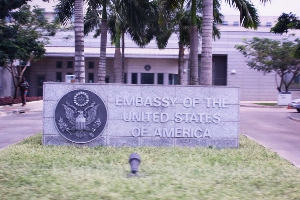Actually, this bacterium does many other things to create cancer cells, protect cancer cells from the immune system and spread cancer. In fact, the characteristics of this bacterium are mind-numbing.
Thus, the claim by cancer researchers (who are funded by the pharmaceutical industry) that DNA damage causes cancer is wrong. Whether this is an intentional error (i.e. to avoid finding a cure for cancer) or is caused by ignorance I do not know.
In any case, due to the lack of energy in cancer cells (i.e. due to the lack of ATP molecules), cancer cells are very weak, which is the definition of a cancer cell. But because cancer cells steal glucose from the body the non-cancerous cells have less glucose and are very sick. They are sick for other reasons as well (e.g. cachexia cycle as cancer cells excrete lactic acid).
Many cancer researchers, starting over 100 years ago in the 1890s, have isolated the cause of cancer to be microbes (at the cellular level), though they did not understand the mechanism inside the cell which caused a microbe to make a cell cancerous.
In 1890 the distinguished pathologist William Russell (1852-1940) first reported “cancer parasites” in cancer tissue that was specially stained with carbol fuchsin, a red dye. The “parasite” was found inside and outside the cells. The smallest forms were barely visible microscopically, and the largest parasites were as large as red blood cells. Russell also found “parasites” in tuberculosis, syphilis and skin ulcers. — Four Women Against Cancer, by Dr. Alan Cantwell, pages 53-54
Dr. Russell, in 1890, knew that the cancer microbes were pleomorphic.
Note that the cancer microbe was found both inside and outside of the cancer cells. One method that cancer cells use to spread quickly (at least for some kinds of cancer) is for the cancer microbe to come out of the cell, travel through the blood and create a new “colony” of cancer cells far from the original colony. Squamous Cell Carcinoma, melanomas, sarcomas and uterine cancer have all been identified by ICRF researchers as spreading in this way.
This is just the beginning.
The cancer microbe also excretes enzymes that coat the outside of the cancer cells. This coating of enzymes blocks the immune system from identifying the cancer cells as being cancer cells.
It was also discovered, around the 1950s, that natural pancreatic enzymes, made in the pancreas, could dissolve this protein coating so the immune system could identify and thus kill the cancer cells.
This discovery, in turn, led to the advice that natural cancer treatments should prohibit the cancer patient from eating meats or other foods that the pancreatic enzymes cut apart. In other words, these foods “use up” the pancreatic enzymes while in the stomach so less of them are available to expose cancer cells to the immune system.
When a cancer patient is using pancreatic enzymes in their protocol, they should not eat meat or dairy products. In fact, no cancer patient should eat very much meat and they should not eat or drink any dairy products (for multiple reasons) or sugar.
The trade off is that meat can help a weak cancer patient who is not on a pancreatic enzyme protocol so in some cases meat is fine for a cancer patient.
Dr. Matthias Rath discovered that these microbes excrete enzymes that cut a path along tissue so cancer can spread more easily along the tissue. The cancer microbes are a cancer-causing machine.
In summary, cancer at the systemic level is caused by an imbalance between the strength of the immune system and the number of cancer cells. At the systemic level many, many things can cause cancer, especially things that weaken the immune system. The weak immune system is almost always caused by microbes and parasites which are inside the organs but are not necessarily inside the cancer cells.
But cancer at the cellular level is caused by very unique and common microbes which are inside of the cancer cells. These microbes do many amazing things to help cancer cells do their damage and protect themselves.
Cancer cells create and excrete large amounts of lactic acid, as already mentioned, as they process large amounts of glucose inefficiently. This lactic acid goes into the bloodstream and gets to the liver. The liver converts the lactic acid to glucose. This “ping pong ball” cycle, where the cancer cells convert glucose into lactic acid and the liver converts lactic acid into glucose, is called the lactic acid cycle or cachexia cycle.
This cycle is what kills about half of all cancer patients because so much energy is consumed at both ends of the cycle. The patient becomes weak and simply dies.
The lactic acid also blocks many key nutrients from getting to the cancer cells.
Dealing with the lactic-acid cycle is frequently a major effort of a cancer treatment. It may involve using hydrazine sulfate, Methyl-Sulphonal-Methane (which helps flush out the lactic acid), D-Ribose (to get the energy to the non-cancerous cells), Vitamin C (ditto), etc. etc.
Here is an article which shows the 16 different names of the different sizes of the cancer microbe (the images are not to scale or shape): Advanced Cancer Theory.
Cancer is not caused by DNA damage
Microbes can lower ATP energy, which is the very definition of a cancer cell. Are there other things that can lower ATP energy? In theory, there are, but from a statistical standpoint, any other cause would be almost statistically impossible.
One possibility is DNA damage where the DNA damage causes defective proteins and the defective proteins cause a loss of some ATP energy.
As I will point out, it is doubtful that more than a few thousand cancer patients worldwide, if any, have cancer caused by DNA damage.
But it is almost certain that certain chemicals, especially asbestos, can cause cancer. It is almost certain that asbestos causes cancer by cutting the sides of cells, thus allowing bacteria to get inside the cancer cells more readily. And it is then the bacteria that causes cancer as we have already seen.
Let's talk more about the possibility of DNA damage causing cancer.
Orthodox medicine claims that all cancer is caused by DNA damage. This is nonsense. However, in theory in rare cases, DNA damage may cause cancer.
Let's talk about the famous BRCA2 gene as an example. Can a defect in this gene cause cancer? It is not clear whether the BRCA2 gene is a cause of cancer or that the microbes inside the cancer cells cause the BRCA2 gene damage. Orthodox medicine would never examine this issue because they are looking to sell drugs, not save lives.
A DNA strand is between 3.2 billion and 3.5 billion nucleotides long. Only a very small percentage of this DNA codes for proteins, about 3 percent. And only a very small percentage of these proteins are involved in the creation of ATP energy. The proteins we are interested in are the proteins needed for the conversion of glucose to pyruvate, for example.
In other words, we are only interested in the structures inside the cells which are involved in the conversion of glucose to pyruvate.
It is possible, but highly unlikely, that DNA damage could affect one of the proteins needed for the creation of ATP energy.
As the cell with this DNA damage divides, all of the “daughter” cells” will have this same genetic damage.
So how does a bad gene create a cancer cell? In a cell, genes are the patterns used to make enzymes or proteins. If a gene is damaged then the enzymes or proteins made by this gene will be defective.
Everything that goes on in a cell is controlled by proteins. There are worker proteins, supervisor proteins, etc. If these are damaged then one or more of a large number of chemical chain reactions inside the cell may fail. This may mean the creation of ATP is damaged.
If a significant amount of ATP energy production is blocked inside the cell, then by definition the cell is cancerous.
So how exactly could the BRCA1 or BRCA2 defective genes cause cancer? The truth is that no one really knows whether these defective genes cause cancer at all. In order for these defects to cause cancer, they must create defective proteins that are needed for the conversion of glucose to pyruvate.
A genetic defect may have absolutely nothing to do with the creation of pyruvate. In other words, genetic defects may be a symptom of cancer, meaning this damage may be caused by the DNA of the microbes which are actually causing cancer.
These defects cannot block the ATP production completely or the cell would fall apart. So we do know it must be a partial interference if at all.
For now, we will have to say, “We don't know if the defective genes are a cause of cancer or a symptom of the presence of the microbes that cause cancer.”
Focusing on microbes inside cancer cells
Let's ask one more question: Have there been any cancer treatments that cured cancer by killing the microbes inside the cancer cells?
In the 1930s Dr. Royal Rife, a microbiologist, was able to cure cancer with gentle electromedicine, which had two frequencies. One frequency was designed to kill the cancer bacteria and the second frequency was a “carrier” frequency which got the other frequency through the cell membrane (and actually through the entire body) to get inside the cancer cells to kill the microbes.
Dr. Rife had a 100 percent cure rate of cancer patients, but he was shut down by the FDA after refusing to sell his technology to the American Medical Association, which he knew would bury his technology.
Two modern-day Rife machines have replicated both of the types of machines that Rife built. These are the High RF Frequency Generator family of gentle electromedicine devices.
The Independent Cancer Research Foundation researches both electromedicine protocols (such as Rife developed) and has also designed several cancer treatments using: DMSO, MSM, honey, maple syrup or molasses as carriers (i.e. Trojan Horses) to get microbe-killing substances inside of cancer cells. These treatments have been very successful.
In other words, if you kill the microbes inside the cancer cells, the cancer cells will revert into normal cells.
In the book Cancer & Natural Medicine — A Textbook of Basic Science and Clinical Research, author John Boik identifies a dozen substances which have been shown in vitro to be able to revert cancer cells into normal cells (he calls it “differentiation”). All twelve of these items are anti-microbial. So it is a matter of getting these substances inside the cancer cells.
More importantly, the Dillers [who were part of the Dr. Virginia Livingston team] showed that cancer germs [i.e. microbes] were able to gain entrance not only into the [non-cancerous] cell (intra-cellular), but also into the nucleus of the cell. This intra-nuclear invasion meant that cancer microbes could gain access to the genes contained within the nucleus itself. — Four Women Against Cancer, by Dr. Alan Cantwell, page 47
Scientists see the DNA damage caused by these microbes and claim that it is DNA damage which causes cancer. This is like saying that smoke is the cause of fires. It is a good guess, but it is false. The DNA damage of a cancer cell is caused by the DNA of the same highly pleomorphic bacteria that blocks the production of ATP molecules.
By Dr. Raphael Nyarkotey Obu
Health News of Friday, 19 May 2017
Source: dr. raphael nyarkotey obu













